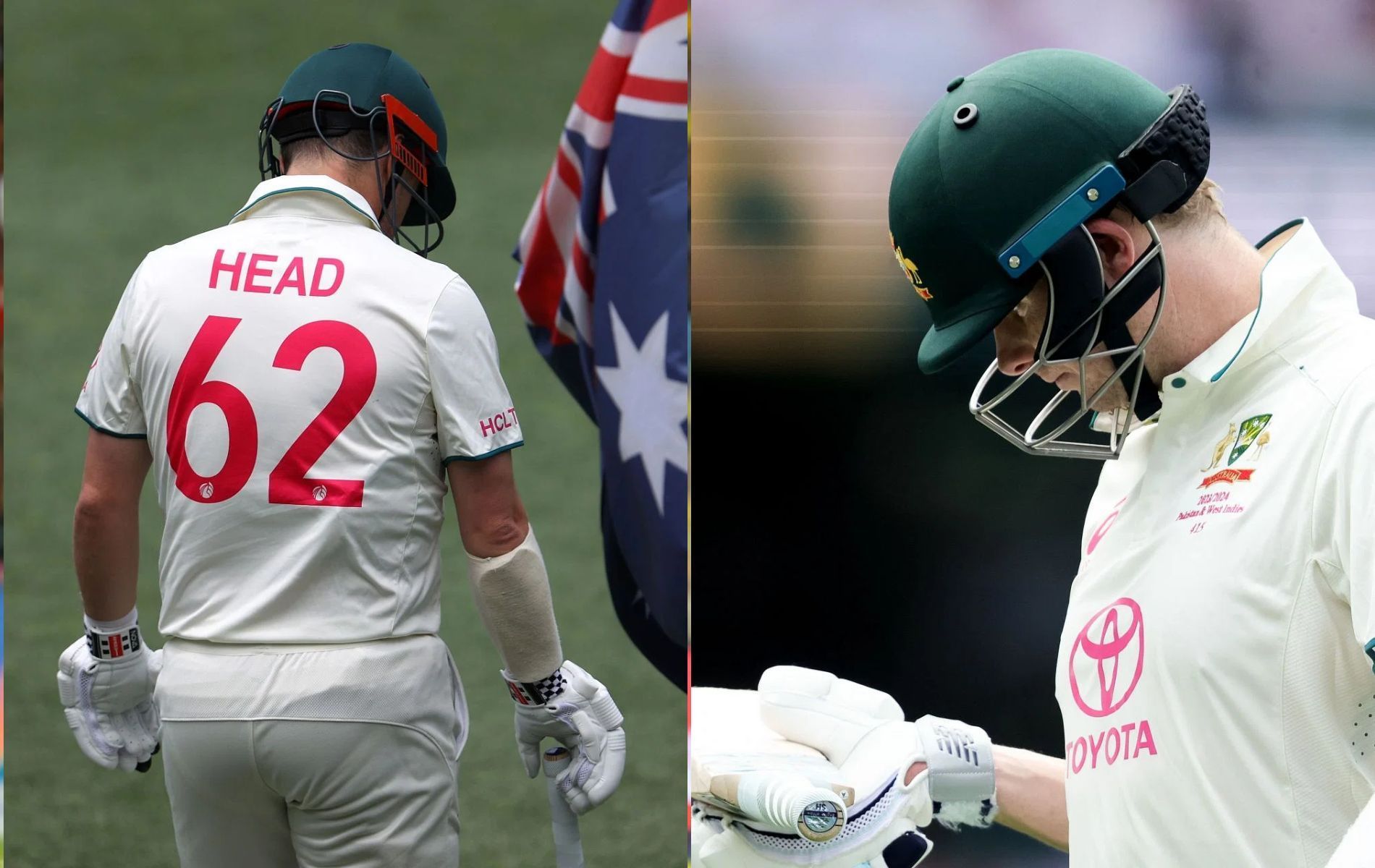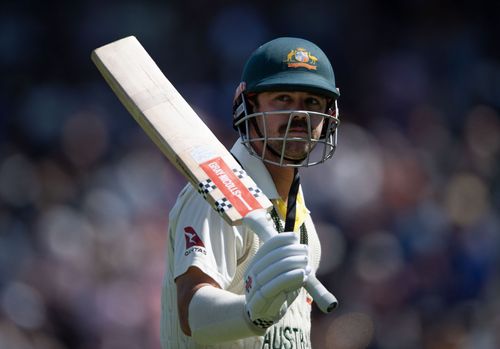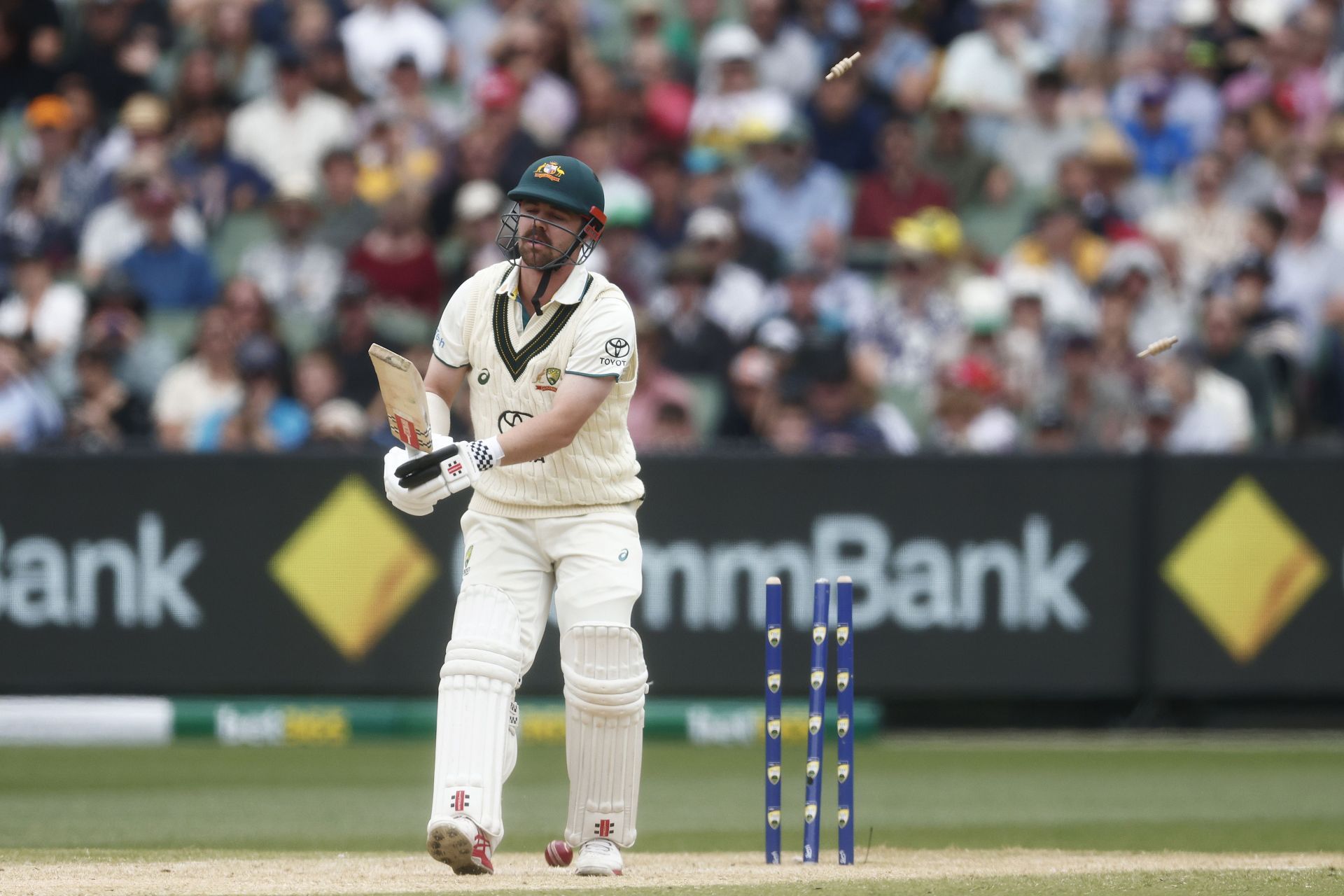
3 reasons why Australia shifting Travis Head to open instead of Steve Smith would be a horrible move
Australia's merry-go-around to find the able replacement for David Warner at the opening spot in Tests continues to hog the limelight in the build-up to the Border-Gavaskar Trophy. After Warner retired from the Test format earlier this year, Australia tried ace batter Steve Smith at the top to partner Usman Khawaja.
The move was mainly centered around playing both all-rounders - Mitchell Marsh and Cameron Green in the middle-order. While a 2-0 series win in New Zealand validated the move, Smith struggled to get going with an average of only 28.50 in the four Tests as the opener.
Head coach Andrew McDonald voiced his opinion on whether Smith will continue to open or if the management is considering other options in an interview with SEN.
"That's the question on everyone's lips, isn't it? Whilst we've got an eye to it, we haven't made any firm decisions around that one. There’s plenty of speculation around that. But in the background, I'd be lying if I said the conversation wasn't happening. There are conversations around a lot of what ifs in terms of that Test summer that is to come. Clearly, if we make a shift with Steve Smith, then someone else will have to go to the top," he said.
The latest report from the Australian website SEN suggests that the side is considering moving swashbuckling batter Travis Head to the top with Smith back to his customary No.4 position.
While opening the batting with Head appears to be a smart move at the surface level, considering his success at the position in the white-ball formats, further deep diving tells us otherwise.
On that note, here are three reasons Australia shifting Travis Head to open instead of Smith would be a horrific move.
#1 Travis Head has been Australia's best middle-order batter over the past three years

Travis Head should be the last person Australia should lay their hands on in the middle-order, considering his massive success with the bat over the past three years.
Since his return to the Test side at the end of 2021, the southpaw has batted in the middle-order at No.5 or 6 in all but four of his 50 innings. Head has averaged an impressive 43 in this period with a strike rate of over 78.
The 30-year-old was the sixth leading run-scorer in the 2021-23 World Test Championship (WTC) cycle with 1,389 runs at an incredible average of 55.56 and a strike rate of 81.80. Head culminated a phenomenal run with a game-changing 163 against India in the 2023 WTC final to help Australia win the title.
Furthermore, Head has impacted Australian wins more than any of the other middle-order batters, averaging 50.43 in 20 Test victories since 2021 with a strike rate of 83.63 and five centuries.
While Green and Marsh have been in and out of the lineup with inconsistent results, Head has been undeniably Australia's most consistent and impactful batter in the middle order over the past three years. To make him open the batting for such a crucial series against India might be disruptive and borderline injustice on the management's part.
#2 Travis Head's impact could be diluted if tasked with overcoming the moving ball

As outstanding as Travis Head has been as Australia's white-ball opener by capitalizing on the powerplay, red-ball cricket is a different ball game altogether. The 30-year-old has shown a tendency to struggle with backing away style of batting against the moving ball, a trait that could come back to haunt him should he open in Tests.
Head opened in the final three Tests of Australia's tour of India last year with resounding success, averaging almost 56 at a strike rate of over 71. However, those pitches provided little to no assistance to pacers, contrary to what the Australian pitches might throw up during the India series.
Barring those five innings in India last year, Head also has no experience of opening against the new red cherry for Australia. Should Australia lose Head early in their innings, something that has a high possibility with his attacking batting style, his inimitable middle-order impact could be diluted.
#3 Australia will lose their lone left-hander in the middle-order
![Head's middle-order presence could be crucial against Ravindra Jadeja in India series [Credit: Getty]](https://statico.sportskeeda.com/editor/2024/09/fe313-17259641862646-1920.jpg)
While the right-left batting combination often gets overstated in all formats, there is still high value in alternating between right and left-handers in the middle order when spinners are mostly in operation.
Travis Head is Australia's lone left-hander from No.3 to 6 with the others being right-handers in Marnus Labuschagne, Cameron Green, and Mitchell Marsh. If Head and Smith alternate places from when Australia last played in Tests against New Zealand, it would be four right-handers from one-drop to No.6.
Considering India are likely to play left-arm spinner Ravindra Jadeja as their lone spin option in most Australian venues, having the left-handed option of Head at No.5 or 6 could be instrumental.
Even at the top, with Khawaja being a left-hander, opening with another one in Head might not put the bowlers' line and length off as a right-hander like Smith would do.
Hence, the variety and versatility in the batting lineup will reduce drastically if Head is made to open and Smith moves back to the middle-order in Tests.